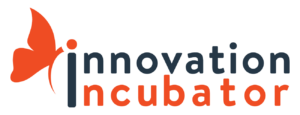
Mothers’ Milk Tool
Mothers’ milk contributes almost $4 trillion to the global economy – but its value has never been considered. A new tool now makes that possible. 
A break-through innovation – A new idea, model, product, or service in a new market.
Alive & Thrive and FHI Solutions have partnered with Australia National University.
Challenging the Status Quo to Impact Nutrition
Q: What solution is offered by this innovation?
GDP typically measures economic output by estimating the economic values of various activities when guiding policymaking. But for every country, except Norway, a woman’s time breastfeeding has never been considered. While the value of breastfeeding is far beyond its monetary aspects, the systemic omission of its economic value, and its absence in food balance sheets means that breastfeeding is not high on policy agendas.
Putting a value on the breastmilk mothers produce can make policymakers aware of how valuable breastmilk is – and maternity protection and programs to enable breastfeeding can be adopted and budgeted appropriately.
This tool estimate both the volume and economic value of breastfeeding and subsequently the costs of lost mother’s milk. The tool uses open access data or estimates, including information on the estimated numbers of children aged 0-36 months; breastfeeding practices available for the country of interest for specific age brackets (indicating exclusively breastfed, and partial or continued breastfeeding); estimates of daily human milk intake by child age (months and years); a price to value human milk (price at which breastmilk is sold or exchanged by human milk banks).
Ultimately, Mothers’ Milk Tool has been created to better acknowledge the role, health, and economic contribution of mothers to society by women’s unpaid care work through breastfeeding infants and young children. This economic data can assist in better policy decision-making and investments.
Q: What is most exciting about the Mothers’ Milk Tool?
With a small investment, this user friendly and open-access tool can be used by a vast range of professionals and by mothers themselves – from policymakers, advocates, researchers, national accountants and statisticians, individual mother/baby dyads, or breastfeeding supporters.
This tool also supports the much-needed tracking of progress on country and global nutrition and breastfeeding policies and targets. By assisting food and health policymakers and public officials to account for breastfeeding in food balance sheets and economic statistics, countries are better able to assess progress against World Health Assembly targets and country nutrition action plans.
At the same time, the tool also allows individual mothers to calculate how much breastmilk they have produced for their child and its value, depending on how many months the child is breasted during the first 36 months. The recognition of the importance of women’s unpaid work can motivate mothers to maintain exclusive breastfeeding and continue for two years and beyond.
Q: How does the Mother’s Milk Tool support system wide change?
Women’s unpaid care work through breastfeeding of infants and young children brings enormous economic value to society. Reliable and up-to-date evidence is needed to mobilize action, to motivate an upscaling of investments, and to change policy.
As such, the Mothers’ Milk tool is helping to ensure that greater assets and resources are allocated towards enabling women and children to realize their human rights, including breastfeeding. This tool also supports greater accountability, since it allows progress towards national and global breastfeeding targets to be measured, which informs updating of national policies, programs, and investment plans.
Looking Ahead: Lessons for our Impact Network
Going forward, we developed the Mothers’ Milk Tool online and an offline, easy-to-use excel tool with calculations for almost all countries and globally. We are collecting user feedback to continue improving both online and offline versions. The offline tool is available in English and French, while the online tool is available in almost all languages. There are challenges to the development and use of the tools. Breastfeeding indicators are not or only partially available or out-of-date in select countries, which alters the calculation. We need to use regional estimates or fill in the information using the predicted model. The currency exchange rate and the number of children born each year have been updated. We plan to update the offline tool periodically and develop an option for updating background information in real-time for the online tool.
At the same time, we are seeking partnerships to introduce this tool to policymakers, environmentalists, and environmental and breastfeeding associations to promote the application of this tool in policy and program designs. The online version, using preloaded data, is used for common users, which facilitate quick basic estimations. The offline version would be useful for advanced users who would like to use the tool for entering own data or counterfactual data.
Find out more at Mothers’ Milk Tool
Download Offline version